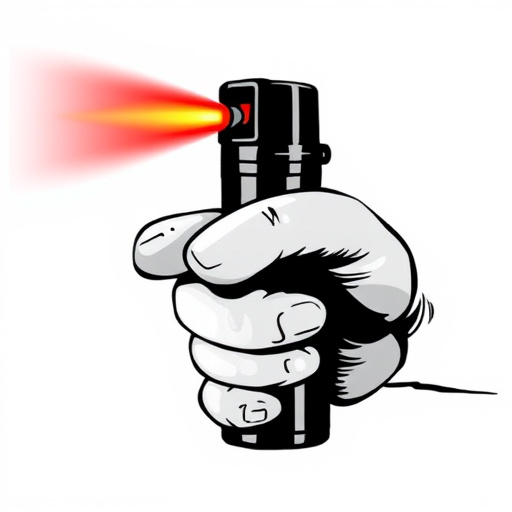Treating pepper spray chemical burns involves immediate rinsing with water for 15-20 minutes, mild soap cleansing, and applying cold compresses. Severe cases with blistering or deep redness require urgent medical attention. Over-the-counter pain relievers offer temporary relief while professionals manage long-term damage. Prevention is key; wearing protective gear like balaclavas, goggles, and durable clothing significantly reduces exposure to pepper spray irritants.
“Discover the power of chemical irritants, particularly pepper spray, and their impact on personal protection. This article delves into the science behind pepper spray’s burning effects, offering insights on causes, symptoms, and first aid treatment for chemical burn injuries. Learn how to navigate these intense encounters with strategic preventive measures and the selection of appropriate personal protection devices. Understanding Treating Pepper Spray Chemical Burns is key to ensuring your safety and well-being.”
- Understanding Pepper Spray Chemical Burns: Causes and Symptoms
- First Aid Treatment for Chemical Burn Injuries
- Preventive Measures and Choosing the Right Personal Protection Devices
Understanding Pepper Spray Chemical Burns: Causes and Symptoms
Pepper spray, a common self-defense tool, uses capsaicin, the active ingredient in chili peppers, to cause temporary disorientation and immobilization. When pepper spray comes into contact with skin or eyes, it triggers a chain reaction. The irritant binds to pain receptors, leading to intense burning sensations and inflammation. This rapid response can cause immediate discomfort, making it difficult for the target to move or defend themselves.
Treating pepper spray chemical burns involves several steps. First, rinse the affected area with copious amounts of water for at least 15 minutes to dilute the capsaicin. This is crucial in minimizing skin and eye irritation. After flushing, gently wash the area with mild soap and warm water. Applying a cold compress can help soothe pain and reduce swelling. If the burn is severe, with blistering or significant redness, seek medical attention promptly. Over-the-counter pain relievers may alleviate discomfort, but severe cases might require prescription medications and professional treatment to prevent potential long-term damage.
First Aid Treatment for Chemical Burn Injuries
Treating chemical burn injuries, particularly from pepper spray, requires immediate action to minimize pain and prevent further damage. The first step is to flush the affected area thoroughly with plenty of cool water for at least 15-20 minutes. This helps to dilute and wash away the irritant chemicals. After flushing, gently cleanse the skin with a mild soap to remove any residual spray. It’s crucial to avoid using harsh soaps or rubbing the area vigorously, as this can exacerbate the injury.
If the burn is severe, characterized by deep red or blackening of the skin, blistering, or severe pain, seek medical attention immediately. Over-the-counter pain relievers like ibuprofen can help manage pain and reduce swelling. Applying a cold compress or ice pack wrapped in a thin cloth can also provide temporary relief from burning sensations. Always remember that proper first aid treatment should be accompanied by professional medical advice for effective management of pepper spray chemical burns.
Preventive Measures and Choosing the Right Personal Protection Devices
Preventive Measures and Choosing the Right Personal Protection Devices
When it comes to personal protection, especially in situations involving chemical irritants like pepper spray, preparation is key. Treating pepper spray chemical burns should be a secondary focus after prevention. Wearing appropriate protective gear such as balaclavas, goggles, and durable clothing can significantly reduce exposure. Additionally, keeping a safe distance from potential sources of chemical irritants and being aware of your surroundings are essential preventive measures.
Choosing the right personal protection devices involves understanding their purpose and limitations. For instance, pepper spray shields against direct inhalation and skin contact, while specialized respirators offer more comprehensive protection by filtering out harmful chemicals. Ensuring that protective gear fits well and is regularly maintained is crucial for effectiveness. Familiarizing yourself with different types of personal protection equipment allows you to make informed decisions based on the specific risks you face.
In understanding the potential severity of pepper spray chemical burns, effective treatment and preventive measures are paramount. By recognizing causes and symptoms, promptly implementing first aid, and selecting the appropriate personal protection devices, individuals can significantly reduce risks and ensure better outcomes when exposed to these irritants. Remember, knowledge is the key to staying safe and effectively treating Pepper Spray Chemical Burns.
